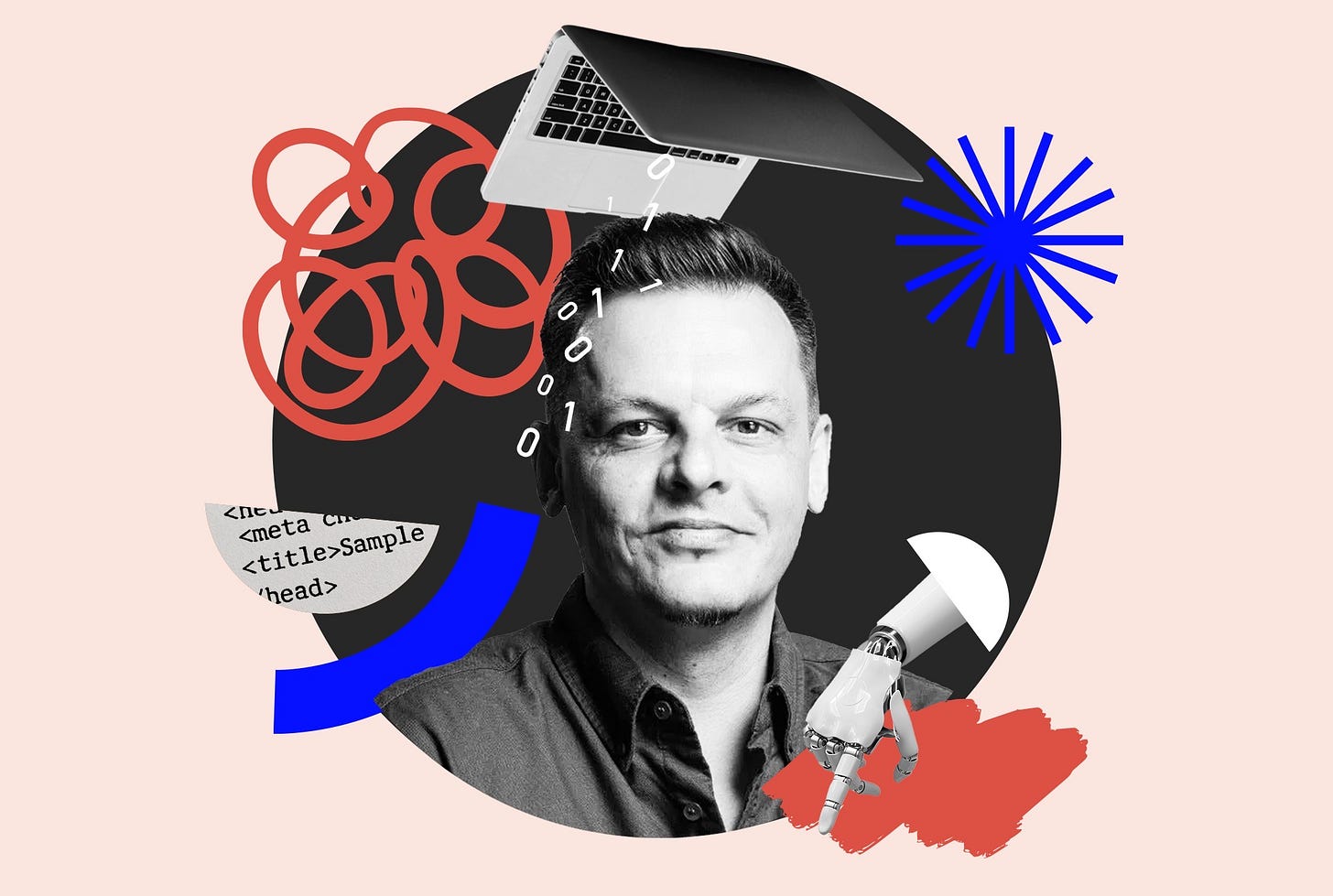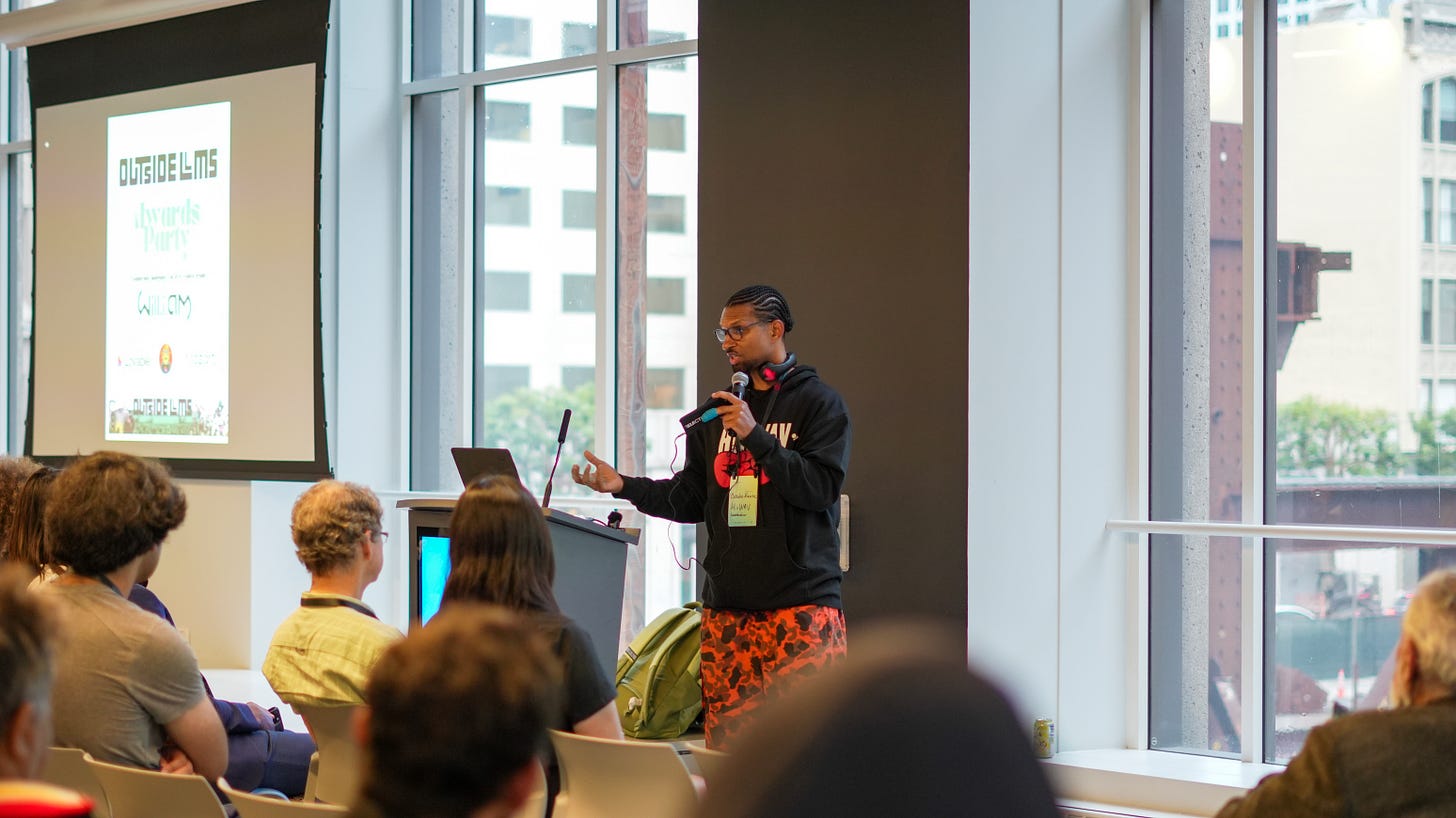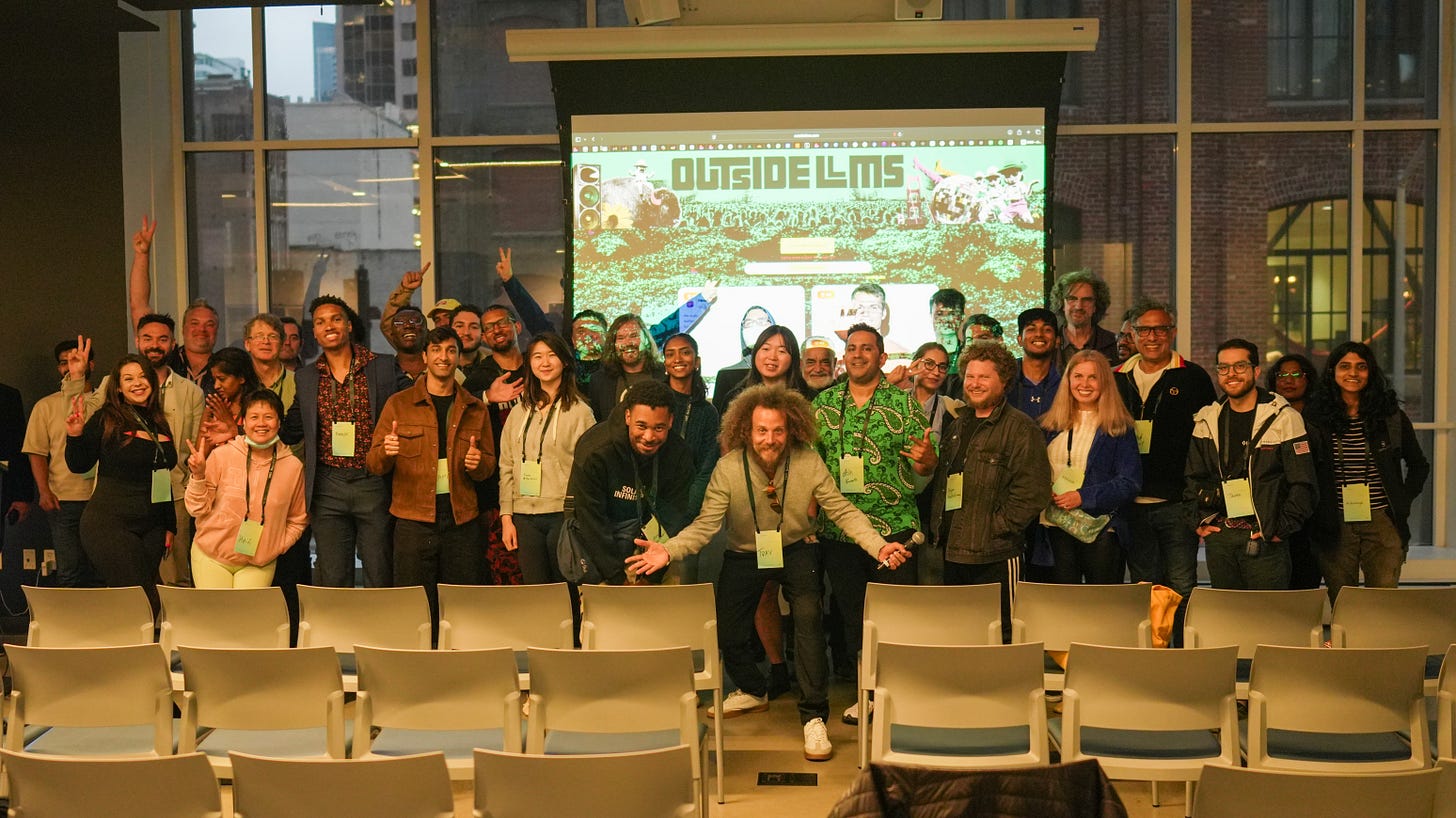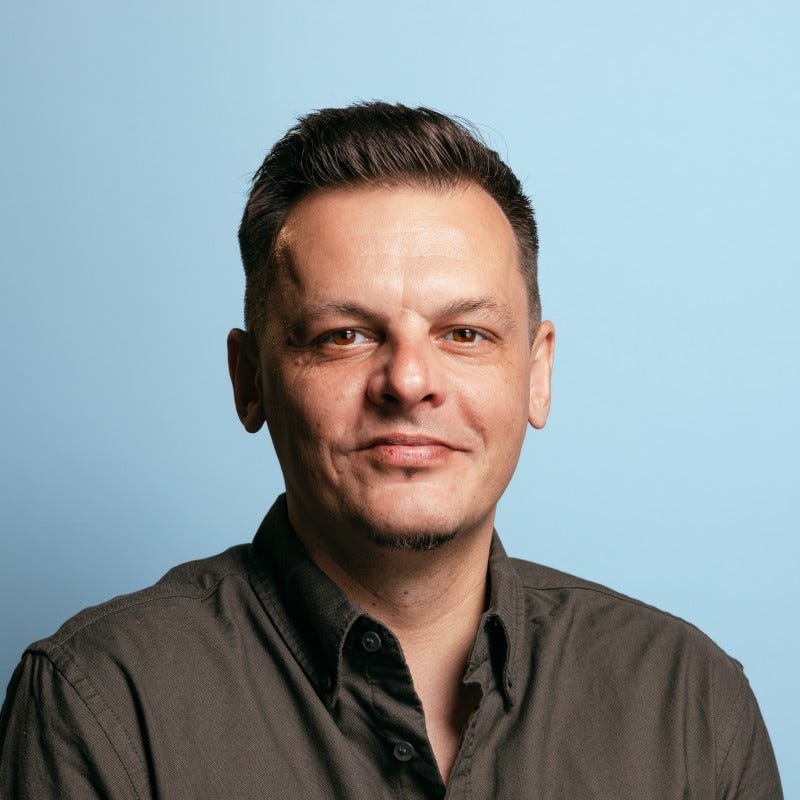We Held a Hackathon for the Music Industry With No Engineers
#64: An interview with Mindaugas Petrutis of Lovable
Welcome to Fundament, a bi-weekly product design newsletter where we share actionable tips and insightful stories with the worldwide design community. Join 2,100+ readers and grow as a UX and product designer with us!
We Held a Hackathon for the Music Industry With No Engineers
The following is the recording of my conversation with Mindaugas Petrutis, who is working on growth and marketing at Lovable.
He and the small team of Lovable in Stockholm are doing a fantastic job, as they were recently announced as the fastest growing software startup in the world and secured the $200M series A funding round.
We first met with Mindaugas around a year ago for his previous project called Coho, way before he joined Lovable. How is he doing now? Is work at Lovable exciting? Are they going to compete with Figma at some point? And finally, what does he think of the future of design tools?
Arkadiusz Radek: Congratulations on the recent funding round of $200M!
Mindaugas Petrutis: Yeah, it’s huge, thank you!
It might not be easy for you to imagine this, but I’m pretty sure some people still haven’t heard of Lovable. Could you introduce the company that you work for to our readers?
Lovable makes it easy for anyone to build websites, web apps, games, and whatever you can think of. The imagination is your limitation at this point. You do it by simply chatting with AI in English. Or even your language. I tested it with Lithuanian, and I've also tested it with Japanese and other languages. It works, so you don't even have to speak English.
Some people are making money using our platform. From individuals launching businesses they couldn't before, to companies using it to roll out new products to their existing customer base, and making $3M in 48 hours, as seen in a company in Brazil that achieved this recently.
So we're now officially the fastest-growing company in the world, and we’ve been around on the market for a year..
Who invested in Lovable so far?
The A series funding round of $200M that you mentioned was led by Accel and backed by other VCs such as 20VC, ByFounders, Creandum, Hummingbird Ventures, and Visionaries Club, as well as a bunch of angel investors, such as founders or co-founders of companies like ElevenLabs, Klarna, Slack, Remote, and Hubspot. But not only people from tech invested.
There’s a cool story behind how will.i.am of The Black Eyed Peas became our investor, which we’ll share at some point. All I can say for now is that he experienced the product first and then wanted to become part of the story. It wasn't like, Oh, this is some hype company, let me get in. He tried the product and was so blown away that he wanted to invest.
Lovable targets users of many roles: designers, developers, founders, and even musicians, like will.i.am. How difficult is it to adapt communication to each of those different roles, so the product grows effectively?
I think it’s becoming easier, and it’ll only get easier over time. I always picture my mom as the person I want this product to be built for. Before joining, I was already a super user; I built a lot with it. Now, with what we’re releasing, I can see it getting to a point where even she could use it.
She’s in her mid-60s, doesn’t speak English, but has this incredible eye for vintage clothing. For years, she’s dreamed of running a little digital shop where she could resell her finds. Back in Eastern Europe, secondhand stores are everywhere. She ran one for 20 years, and she still loves hunting. She’ll walk into a shop, pick up a Gucci handbag for $5 because she knows it’s authentic, and then resell it for $500.
She tells me she doesn’t want to deal with apps or complicated platforms—she just wants her own shop, where people can come and buy. That’s the future I’d love to see: where she could simply say what she wants, and the tech handles the rest. No worrying about security, APIs, or AI. She just describes her vision, and it builds itself. We’re getting pretty close to that.
Are you planning to do a Mom Test on your mom with Lovable?
I would love nothing more than to do that in the next few months.
Fingers crossed for her passing it! Let’s talk about Figma, which has recently celebrated a big success as well. Just a few weeks ago, they began trading on the NYSE. When you look at the competitive landscape, do you see Figma as a direct competitor to Lovable?
I have a couple of perspectives on this. When I was at InVision, we were one of the most essential tools for designers, and then Figma showed up. And while it wasn’t the only reason InVision disappeared, it played a huge role. You can’t ignore a company that essentially made a $2B business disappear. Recently, they went public, and from what I saw, they are doing really well.
But here’s the thing: Figma came into the vibe-coding space after us, and competing with them is a different challenge. They have multiple products, multiple business lines. We’re focused on just one thing—and that makes us different.
While Figma is embedded in lots of companies, its user base is mostly designers, PMs, and engineers. Ours is far broader. On Lovable, we’ve seen teachers building businesses, or even someone like will.i.am experimenting with it. That range is huge. And when people see someone they admire, whether a celebrity, influencer, or even just a peer, using Lovable, it suddenly feels accessible. I think it would be quite tricky to have this land the same with anyone outside of tech.
Our language, our focus, is all about enabling people to build something they couldn’t before. For Figma to reach that audience, its whole messaging would need to change.
Are there plans for Lovable to become a direct competitor to Figma in their space and serve as a one-stop shop for designers in the future?
I don’t know if we’re really thinking about it as a “one-stop shop for designers.” What does that even mean, right? What I can say is that design systems are a huge part of building any product or new feature, and making that easier is definitely on our path. It’s also a big requirement for enterprise companies and deals, so that will naturally evolve.
But bigger than that, I think what’s going to change is how we build products overall. I don’t see us saying, “Let’s become the tool just for designers.” Instead, the way products are built will fundamentally shift, and then designers will adapt to that, because that's what historically a new piece of technology tends to do.
Can you tell our readers more about your current role at Lovable?
I’m a part of the Marketing Team, and my role is really interesting. The whole Lovable is a tiny team. We’re making $100M ARR with 60 people. When I was working at InVision back in the day, at our peak to make $100M ARR, we had 800 people on board. My role primarily involves working on creator and influencer collaborations. That could mean partnering with a creator who has 50,000 followers, making sure contracts and payments are handled, or building long-term relationships with major YouTubers. Lately, I’ve also started working with high-profile collaborators and cultural moments.
For example, we just piloted an AI and music hackathon in San Francisco called the Outside LLMs as part of Outside Lands, the largest independent music festival in the U.S. Two weeks before the festival, we brought together artists, musicians, producers, DJs, and talent managers to build their ideas with Lovable. We had an incredible judging panel with MC Hammer, Chris Messina (inventor of the hashtag), and even Chris Kelly (co-owner of the Sacramento Kings). The top teams demoed their projects earlier this week*, and starting today, 200,000 festival attendees can try them out directly in the festival app and vote. Winners will be announced at the end of the festival.
What’s powerful here is accessibility. Traditionally, hackathons like this happened at major events like this, but only coders could really participate. Artists and producers, the people closest to the real problems, were left out. With Lovable, we’ve removed that barrier, and the projects people built blew my mind.
Are you saying you held a hackathon and removed engineers from it?
They were welcome but not required. We focused more on producers or the DJs, people who are in that industry, day in and day out. They see inefficiencies, they see problems, they see opportunities. But then, for the majority of the cases, that's where it stops. What’s next? Do I hire an engineer? What kind? And how to work with them? Can I even afford one? In most cases, no.
What’s the biggest challenge in developing a product such as Lovable from your perspective?
I think, like for any other product, it’s staying close to the customer. I worked with some founders before, and what I immediately noticed about Anton and Fabian is the laser focus. I’ll give you one example. It was my first month in Lovable. We’ve got a Slack channel called #crazy-ideas, and I posted in that channel something that one of our users requested by sending me a direct message. I wasn’t really sure if it was a crazy idea, but Anton responded pretty quickly, saying, “I always wanted to build something like this, but we’re not doing this. Not a priority.” He is a co-founder and could easily tell the team to build this, but he’s well aware of what should be a priority.
Separating yourself from the work is extremely important. I think that’s why Lovable is so successful and loved by users, because the team is building something that resonates with their needs. Can you tell our readers how you ended up at Lovable? I’ve heard it’s an interesting story.
When we met last year, I was working on a product idea I still believe needs to exist. We built an early alpha, and I had a small, unpaid team, but without funding, it was tough to keep momentum. Eventually, my only engineer left, and suddenly I was stuck with a beta I promised, but had no one to build it.
Around that time, I was already deep into AI. I’d been experimenting since before GPT-3 took off, and when new tools like Lovable started emerging, I thought: maybe I can learn enough to become my own engineer. I began building small projects just to test what was possible. Some mornings I’d literally ask ChatGPT for ten random ideas and then build one of them, just to practice.
That led me to create Backchannel: a lightweight product where people could access my career advice without me becoming a coach or doing a full course. I went from an idea on a Sunday night to my first paying customer by Thursday. The next day, I built my own Stripe integration, something that used to take teams of engineers at previous companies I’d worked for. Sitting there, sipping coffee, pushing it live myself—it blew my mind.
Backchannel has since made $7–8k in revenue, and friends who are top engineers even tried to “hack” it, but couldn’t. That was before Lovable added the security features it has today. I realized then just how powerful the platform was. Lovable invited me to a livestream, then featured me on their blog, and I kept building with it.
In the back of my mind, I told myself: if they ever reach out, I’ll drop everything and join. And then it happened. One day, I noticed Lovable folks viewing my profile on LinkedIn. Soon after, Elena Verna (head of growth) DM’d me, we had a great chat, did a workshop together, and then I met Anton. A few days later, they made me an offer, and I joined.
Your background doesn’t resemble that of a typical designer. For long years, you have worked closely with designers, either by recruiting them or running product communities for them. Do you consider yourself one?
I think I’m just good at figuring things out. Honestly, when I joined Lovable, I had a real “what have I done?” moment. I’d never done influencer marketing before, and suddenly, we were one of the most talked-about companies in the world. The scale, the eyeballs, the pressure, it hit me fast.
But then I reminded myself: I know how to break things down. My role is really about relationships, recognizing patterns, understanding context quickly, and operationalizing ideas. I’ve done all of that before. Once I reframed it, I felt calmer. And hearing from industry peers that we’re “killing it” gave me confidence that the work is landing.
Am I a designer? In some ways, yes. My brain has always worked that way. Even back when I worked in hospitality, I was basically doing service design without realizing it and redesigning the flow of a restaurant to remove friction and make things run smoother. Now, I’m PM’ing my own projects, building with AI, and shipping internal tools. So, I guess I’m a bit of a designer, a bit of a PM, and a builder. A combo of all of it.
You are a Swiss Army Knife, Mindaugas! Here’s my last question. How do you see AI shaping the future of product development and design? And specifically for designers, what skills do you think they should focus on today to stay relevant and competitive in tomorrow’s job market?
It’s a good question. I think designers need to detach themselves from the tools and focus more on core skills, things like communication, defining problems clearly, and framing solutions. If your career has been mostly about pushing pixels in Figma, that’s the part of the job that’s going to disappear. And it will disappear fast.
I’ve spoken with many designers who are still deeply attached to a process where they spend days crafting designs and then present them. That way of working is about to get ripped out. My fear is that too many people won’t adapt quickly enough.
There will absolutely be a place for designers, an even more important one, I think, but it won’t look like it does now. You need to anticipate the shift, insert yourself into the new workflows early, and show how you add value there. If you wait until the old way is gone, it might be too late.
*The interview was recorded on Friday, 8 August 2025, the starting day of the Outside Lands Festival.
Mindaugas Petrutis
Mindaugas builds systems that help people find momentum in moments of uncertainty.
For over a decade, he has worked at the intersection of community, product, and career navigation—designing programs, tools, and experiences that enable people to get hired, build confidence, and move forward.
What began with creating trusted communities has evolved into a more hands-on approach. Today, Mindaugas uses AI to develop tools that transform complex, high-stakes problems into working products—fast enough to test, clear enough to act on.
He has built communities for designers and led teams across Europe, the US, and APAC. He has managed multi-program P&Ls and created platforms that thousands of people have used to reset their careers or rethink their next chapter.





